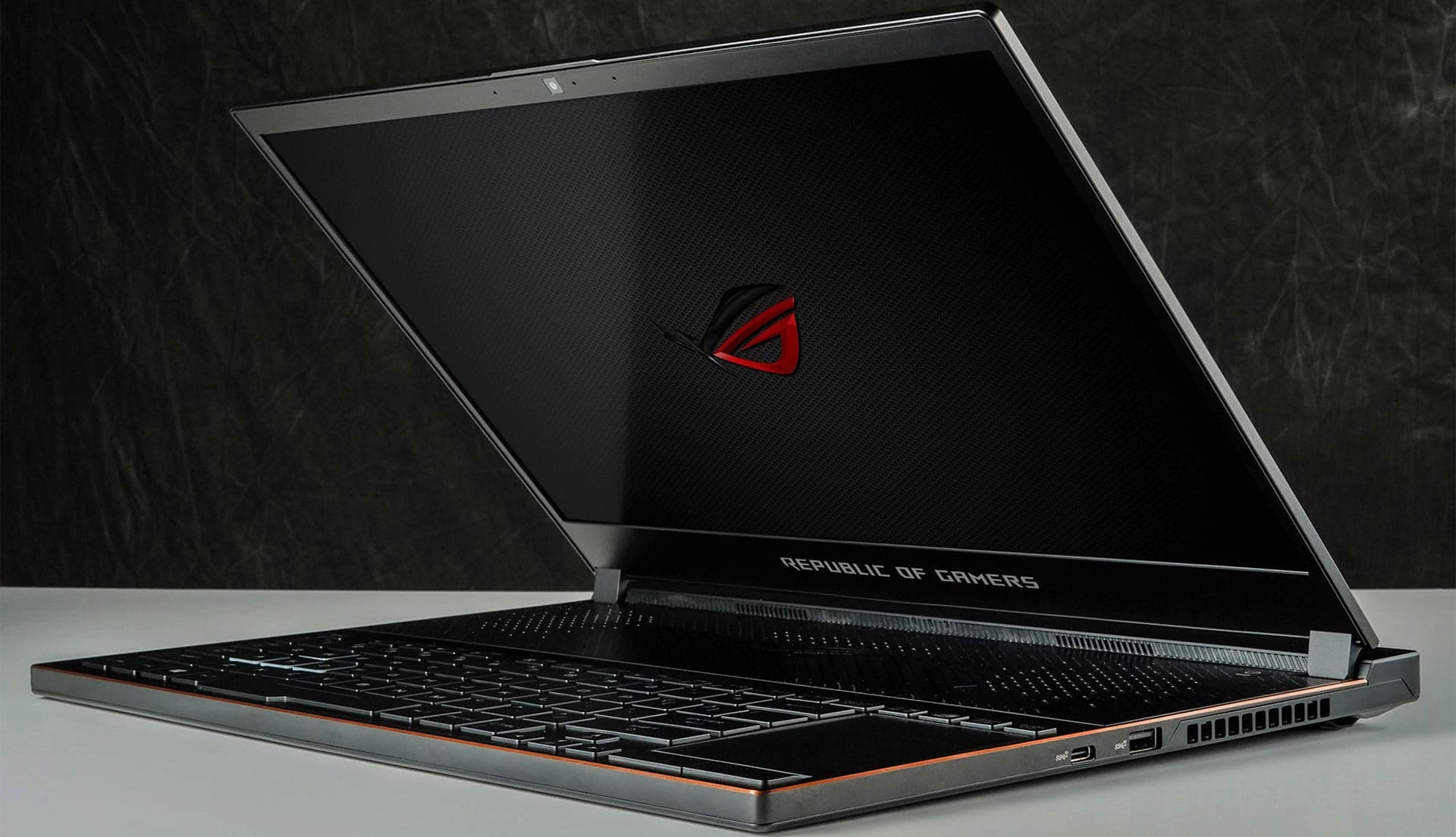NVIDIA’s latest and greatest graphics technologies are finally on laptops.
Now, for the first time, ray tracing, DLSS, variable rate shading and more is available for gamers who like to take their games on the go, or just don’t have the space or desire for a full-blown desktop. ASUS were kind enough to share their newest GX531 laptop, complete with Max-Q RTX 2070 for me to have a look at, and see whether the new technology is truly as transformative as NVIDIA claims.
I can see two main use cases for this laptop. Firstly, those who want RTX on the go, and secondly those who want to play games at high frame rates. To me, these are opposite markets: one is lower-spec esport games like Overwatch or Fortnite, and the other is for high spec games with cutting edge technology like Shadow of the Tomb Raider and Metro Exodus.

But before we get to the performance of what’s inside, let’s take a look at the outside of this intriguing laptop. The first and most obvious design feature of the GX531 is the forward position of the keyboard, and commensurate transfer of the trackpad to the right hand side of the keyboard. ASUS explained that this move was to increase the heat dissipation capabilities of the device, allowing it to remain cooler and thus increase performance of the laptop as a whole.
With their latest generation ASUS have stuck to the design of the previous generation, keeping the keyboard at the front of the “lap” area where the palm rest usually is. As a result, the trackpad has moved to the right of the keyboard, and with the push of a dedicated button also transforms into a number pad. It’s an innovative design, though one that comes with some undeniable trade-offs. It is more difficult with this design to use the laptop on your lap, or at a desk with only small amount of room or depth. Your palms still need a place to rest, and where they would normally sit on the laptop itself, they have to sit on a desk, table or other flat surface. It also means that the screen is slightly further away, which is not something I noticed much, but your experience may vary here.
There’s a decent range of I/O options, though importantly there’s no Ethernet port. While 802.11ac was certainly fast enough, it’s always preferable to go with a wired connection, especially for high speed gaming where milliseconds of latency really matter. For these situations you’ll need to grab a dongle.
While the display is 144Hz, there’s no variable refresh rate technology such as G Sync or FreeSync. This means games have to hit 72FPS or 144FPS to avoid screen tearing. Unfortunately I couldn’t see an option to limit to 90 or 120Hz in the unusually barren NVIDIA Control Panel, but on the plus side the display housing is very nice, with thin bezels around the 15” screen. It also features a forward hinge design if that’s up your alley.
A public service announcement here: the laptop comes installed with Windows version 1803 but version 1809 is necessary for ray tracing. Make sure the first thing you do is update to the right version, otherwise you may be scratching your head like I was. This is not the fault of ASUS, but rather is a requirement Microsoft to install 1803 on new machines.
But what does ray tracing bring, and what does performance look like? Well, unfortunately my review unit came with a broken fan out of the box. As a result, the machine was unable to maintain an acceptable temperature and clock speeds of the CPU would plummet to 800MHz, completely messing up my usual testing routine. ASUS very kindly offered to replace the test unit, but I had seen enough of the performance to know that it will be everything you need from its 1080p screen, as have many other high-end mobile GPUs at that resolution. So while it’s unfortunate that I was unable to complete my test bench routine, I was able to (briefly) see a generally high level of performance in titles such as Shadow of the Tomb Raider, Overwatch, Fortnite and Apex Legends. And yes, once updated to Windows 1809 ray tracing worked well in Metro Exodus where it is transformative.

The one technical downside of this machine is that it comes standard with only one RAM stick installed. While that has benefits in making upgrades cheaper, it can compromise gaming performance being single-channel rather than dual-channel memory. And considering this is a gaming laptop at its core, it is a rather strange decision on the maker’s part.
So for a slim, light, well-built and performant machine the GX531 is a solid choice. You will have to carefully think about where you use this machine though, given the forward position of the keyboard. I actually quite liked the side trackpad – more than I expected, so this is one area that shouldn’t be too much of an issue for you to get used to. While not exactly quiet, I was impressed that the type of fan noise was far less annoying than other laptops, and was a sound that I could see myself living with playing without headphone.
For a gaming laptop its absurdly small, and for those who don’t want a desktop, or bus-sized desktop replacement, the GX531 has much to offer.
[rns_reactions]

